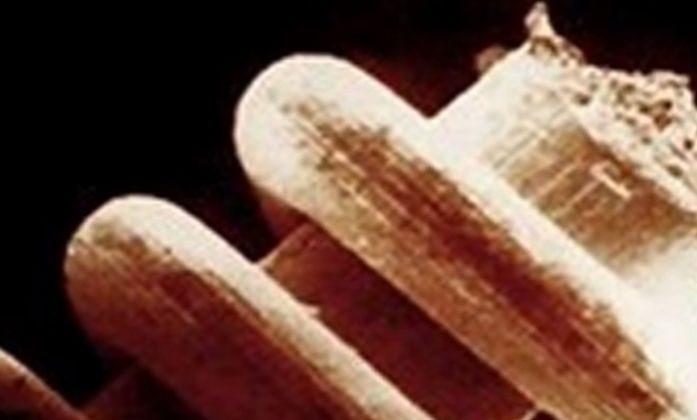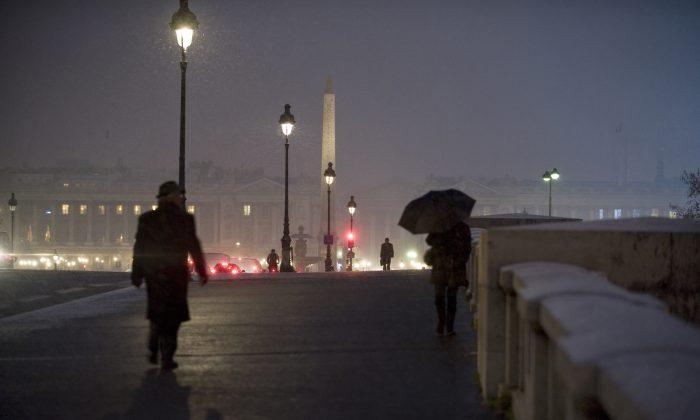“The Dropa came down from the clouds with their airgliders.
Ten times the men, women and children of the Kham hid in the caves until sunrise.
Then they understood the signs and saw that the Dropa came in peace this time.” Dropa Disc translated by Dr. Tsum Um Nui
The only legacy the shipwrecked Dropa clan left to the people of Bayan Kara Ula was their swift and fierce extermination. According to local oral history, the inhabitants of the area were disgusted by the poorly proportioned bodies of the Dropa and led a persecution against these “visitors from the sky.” Facing this attack, the diminutive Dropa, with their bulbous heads and bulging eyes, were almost entirely wiped out by 10,000 B.C.
Move 12 centuries into the future and this incredible history of the Dropa remains alive. This unusual tale might never have passed the frontiers of the desert mountain region of Bayan Kara Ula—on the border of China and Tibet—if not for the expedition of University of Beijing Professor Chi Pu Tei in 1938.
Chi Pu Tei and his student were studying a system of interconnected caves in one of the most inhospitable areas of the world, nearly 400 miles from the closest inhabitants. It is said that the professor found within the caves something much more peculiar than he was prepared to study: a grave replete with skeletons of small beings—just under 4 feet tall—buried together with rock discs and very peculiar cave paintings. These frail bodies possessed unusually large heads and did not correspond to any species that Chi Pu Tei had seen before. When it was proposed that the remains could belong to a species of primates not formerly recognized, Chi Pu Tei replied, “Who ever heard of apes burying one another?” Seven hundred and sixteen identified discs were transported back to the University of Beijing, and a few were delivered to the Soviet Union.
The discs were nearly a foot in diameter, one-third of an inch wide, and each had a carved circular or rectangular center opening. More importantly, the majority possessed a pair of tiny spiral grooves engraved with strange characters originating at the outside of the disc, from the edge to the center.
In 1958, an investigator named Dr. Tsum Um Nui embarked on a more detailed study of these mysterious stone discs. In 1962, after spending several dedicated months studying them with the aid of a magnifying glass, Dr. Tsum deciphered the messages coded in the stones. They told of unknown histories like the forced landing of Dropa ships and their eventual demise at the hands of the local people. Dr. Tsum presented these findings to his colleagues that same year.
Despite this miraculous discovery, Dr. Tsum’s controversial revelations prompted Beijing University officials to forbid any mention of this subject. When the papers were cleared for public submission a few years later, Dr. Tsum’s work was thoroughly mocked by his colleagues.
News of the discs wouldn’t arise again until 1974, when an Austrian engineer named Ernst Wegener took Polaroids of two of the discs on display in the Museum of Bampo in Xi'an City. He immediately recognized the characteristic spiral grooves and center openings that he had only heard about in rumors.
With such a fascinating history, what became of the Dropa discs? The only known concrete evidence that still exists is the pair of Wegener photographs.
Curiously, many of the people involved in this story cannot be verified. Beijing University archives have no record of an expedition to Bayan Kara Ula, nor the existence of an investigator named Tsum Um Nui. While a lack evidence might make some believe that the discs may never have existed, consider that much of China’s controversial archaeology suffers a similar suppression. The covering up of cases like the Chinese pyramids, or the 4,000-year-old Caucasian mummies found in the desert of Takla Makán, are a reminder that such cover-up strategies have been taken to unimaginable extremes.
When the supposed history narrated on these discs matches so neatly with the oral tradition transmitted for generations in the Bayan Kara Ula region, it begs the question of how such a complex story might originate among the natives of a spaceship falling from the sky 12,000 years ago if it didn’t actually occur. The Dropa’s small stature, odd shape, and eventual genocide are constants that appear in both the story from the Dropa grave discovered by Chi Pu Tei and in the ancient legend narrated by local inhabitants.
But without hard evidence, the story remains hard to swallow. Perhaps a great quantity of Dropa-related artifacts have been misrepresented, either casually or deliberately. We are only left to wonder whether the stone discs and the ancient local tale might be hiding a truth even more profound.




Friends Read Free